Breadcrumb
Navigation Menu
Kuvapankki sisältö englanti
Image bank
In our image bank, you can find photographs related to the Police Museum exhibitions and the history of the police. You are welcome to use images within the image bank for free: for example, as part of magazine articles and presentations concerning police history and the Police Museum.
Please remember to mention that the image was sourced from the Police Museum collection (for example: ‘Photo the Police Museum’). You can find more detailed information on the source of each image when accessing the image in question.
Click on the image or its name to see the information related to it. In the same place, you can also download the image to your device in a larger size.
If the image bank does not include the photograph you are looking for, feel free to contact our image services, subject to a charge.
Further information about the image services subject to a charge
Kuvapankki kuvagalleria englanti
-
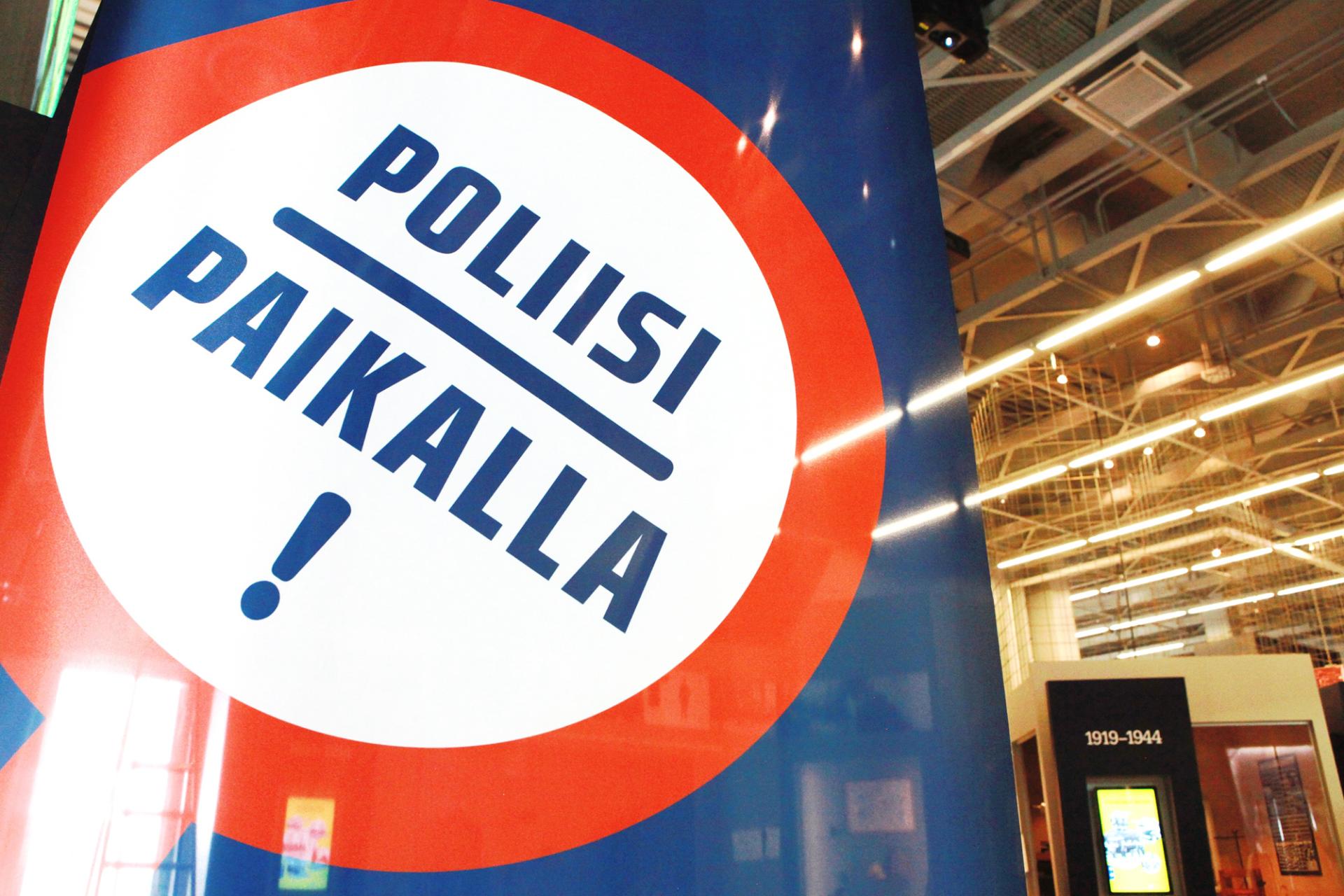
The Police is Here!
How has police work changed during the years? What did a “relay crown servant” do? What about the “vice squad”? When did Finland’s first Internet police officers begin working?
The Police Museum’s The Police is Here! permanent exhibition provides answers to these and many other questions. In the permanent exhibition, we give information about witch hunts, homicide, State treason, and cybercrime in the modern world.
Photo the Police Museum
-

A view of the exhibition
In the Police is Here! permanent exhibition museum visitors are able to walk along streets and alleys where the police do their everyday work. The “criminal landscape” of the various epochs is on display: crimes, accidents and the dark side of the lives of police clients.
Photo the Police Museum, Jarkko Järvinen
-

Suspect registration chair
In the Police Museum’s permanent exhibition, museum visitors can, for example, examine a view into a room where an old chair in which suspects were photographed for police records is on display. Crime suspects were photographed sitting in this chair.
In the Police Museum, museum visitors can themselves sit in a similar chair.
Photo the Police Museum -
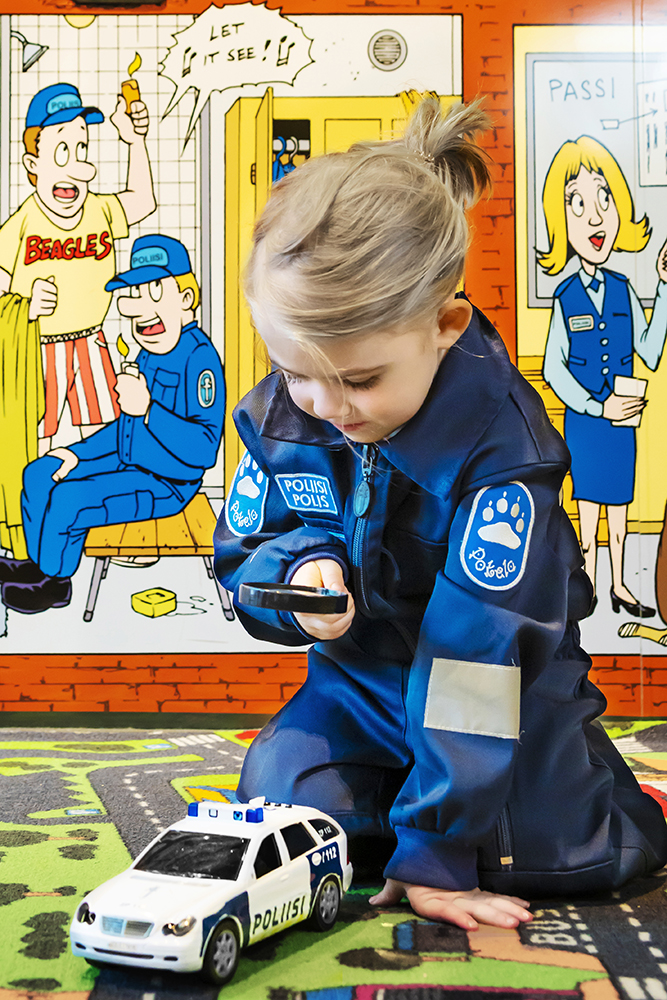
A lot to do in the children’s section
There is a lot to do in our children’s section Pokela. Children can, for example, sit behind the wheel of a small police car and play with toys. In Pokela, touching the items is permitted!
There is a hidden treasure in the closet: small police overalls that the little officers of Pokela police station can wear during their tour.
Photo the Police Museum, Reetta Lepistö
-
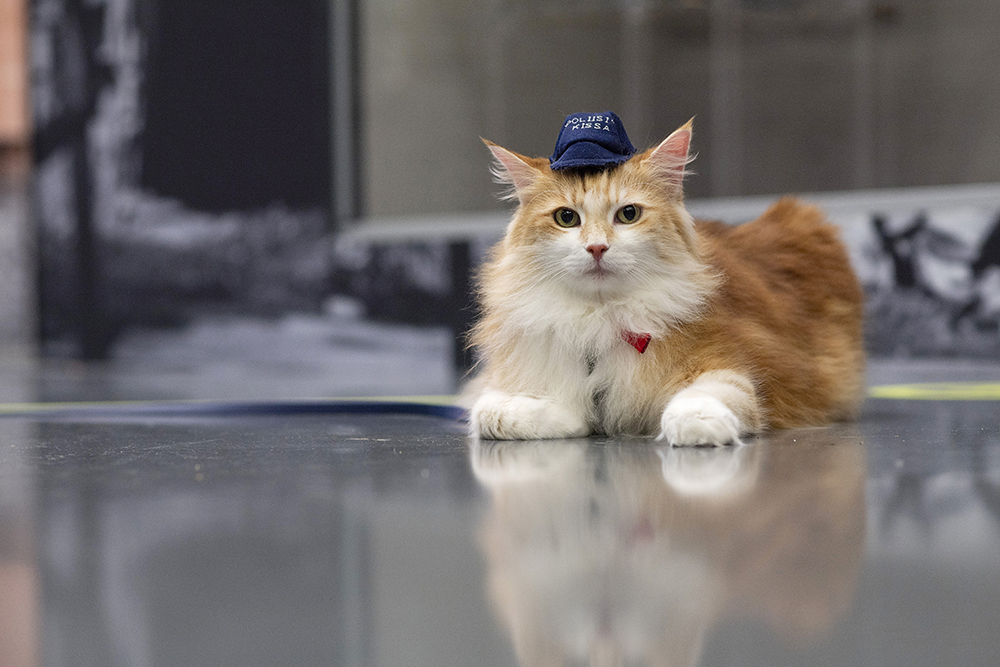
Police cat Aamu
Norwegian forest cat Aamu has served as the Police Museum’s police cat in social media since 2015.
The police cat has her own Facebook page, where she tells about her everyday life and reminds everyone of the importance of using a reflector, for example. Aamu police cat's cartoon figure can be seen having adventures in the Police Museum's exhibition spaces and children can take the “Find the robber with police cat Aamu” exercise booklet (in Finnish) with them on their tour of the museum. Aamu visits Police Museum events very rarely.
To police cat Aamu’s Facebook page (in Finnish)
Photo Jenna Lehtonen
-
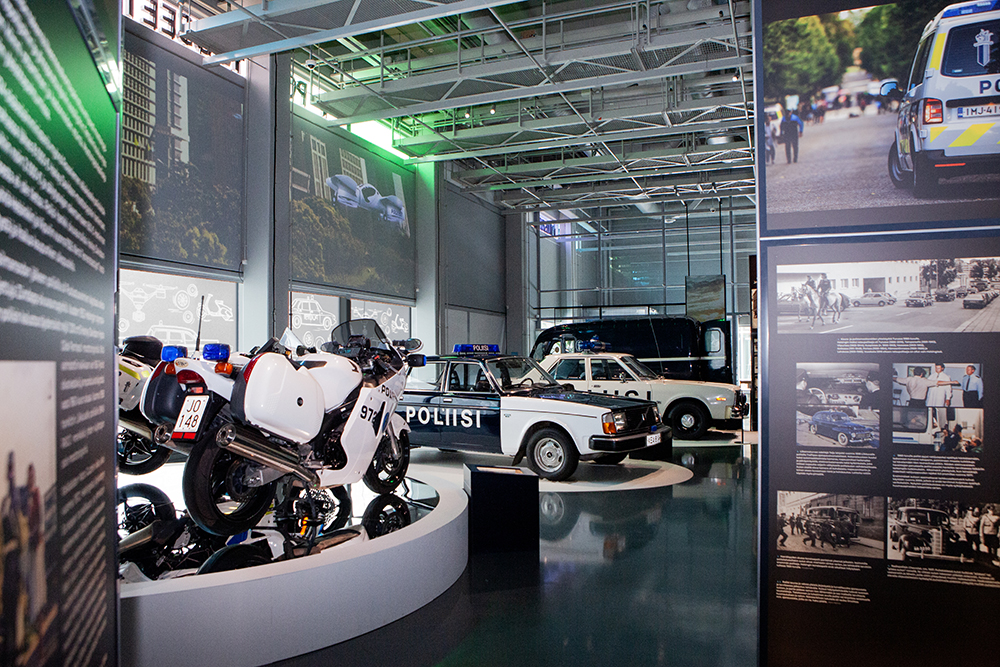
History and present day in Marias and Mörkös exhibition
In the Police Museum’s special exhibition, “Marias and Mörkös – Police Vehicles On and Off the Road”, visitors can see police cars, motorcycles, scooters, snow scooters and all-terrain vehicles. The exhibition presents both the history and current situation of police vehicles.
Photo the Police Museum, Roosa Lehtonen
-
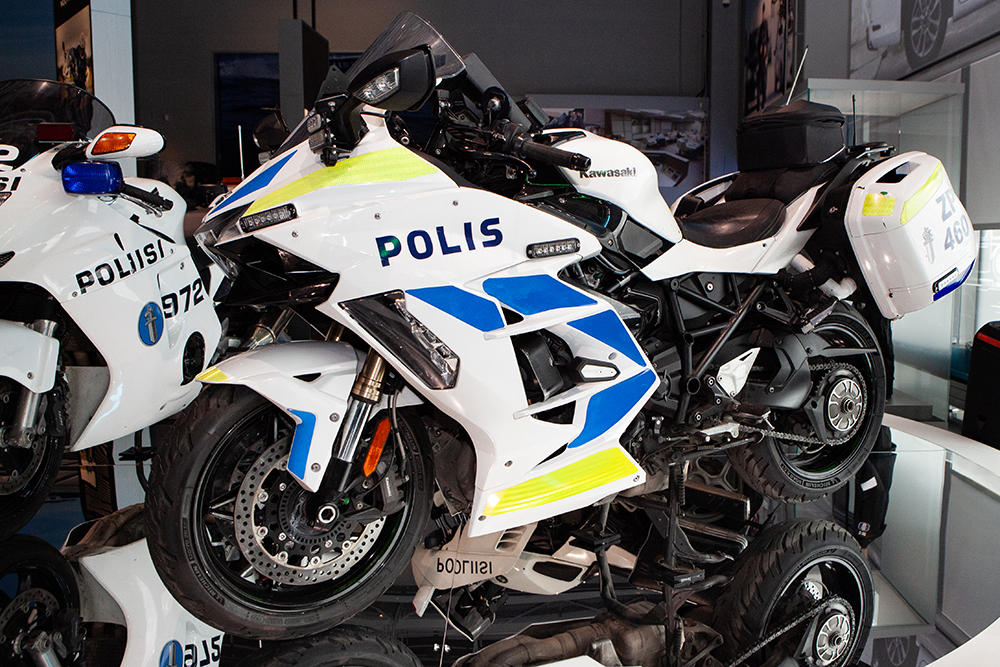
The world’s fastest police motorcycle
In the special exhibition “Marias and Mörkös”, one of the exhibits is the world’s fastest police motorcycle Kawasaki Ninja H2 SX. Other vehicles on display include Saab 99, Dodge Aspen Police Special and Volvo 244 DL.
Photo the Police Museum, Roosa Lehtonen
-
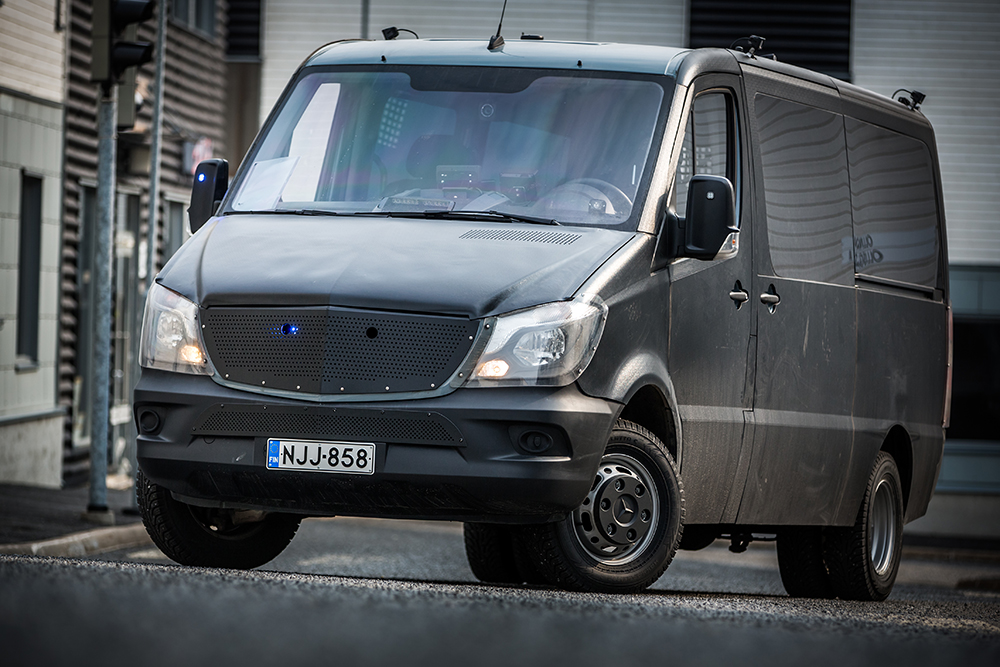
Mörkö personnel carrier with protective covering
“Mörkö”, mentioned in the name of the Marias and Mörkös exhibition, is the nickname for crowd control police forces’ dark personnel carrier van with protective covering. The van has capacity for carrying several crowd control (JOUHA) officers. The back of the van has a separate compartment for the apprehended.
Photo Sami Hätönen
-
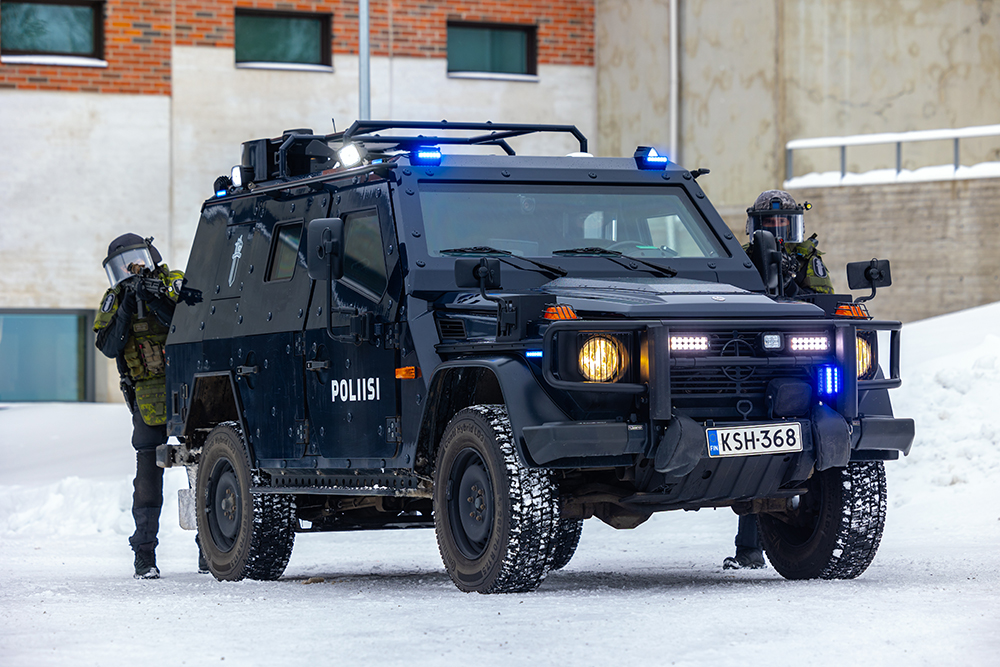
Armored bulletproof HEVI car
The police started using armored bulletproof HEVI cars in 2019. HEVI cars are used for example during large public events and state visits, and also in patrolling. These cars contain the same technical equipment as regular patrol cars.
Photo Sami Hätönen
-
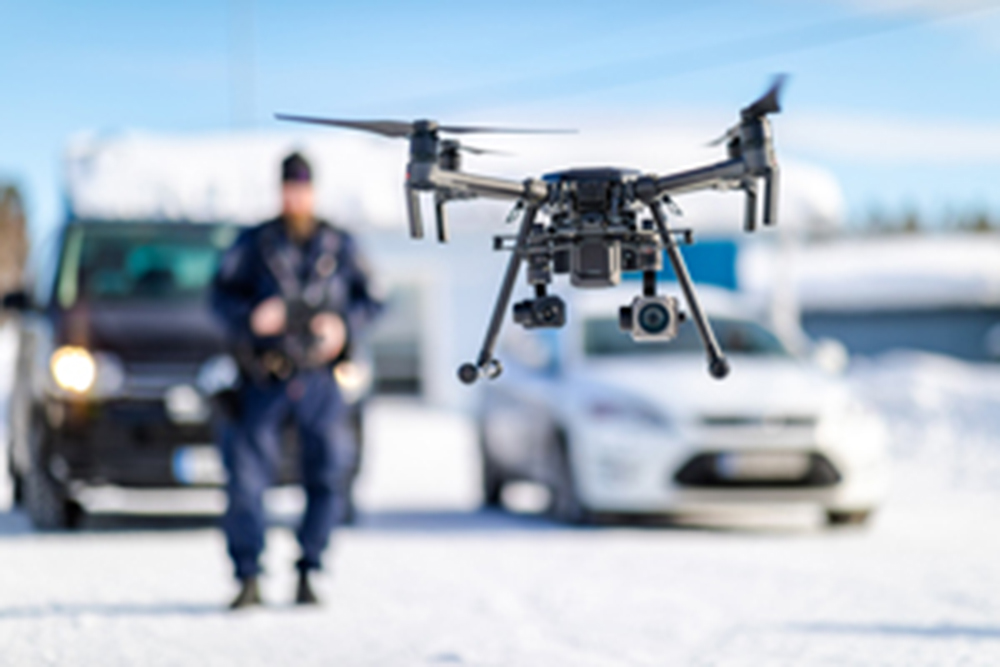
Unmanned aircraft
The police utilize unmanned aircraft (UAS), known as drones, for various kinds of searches. They can also be used in crime scene documentation and for transmitting real-time video to those in charge of the operation, for example during state visits and Independence Day festivities.
Photo Sami Hätönen
-
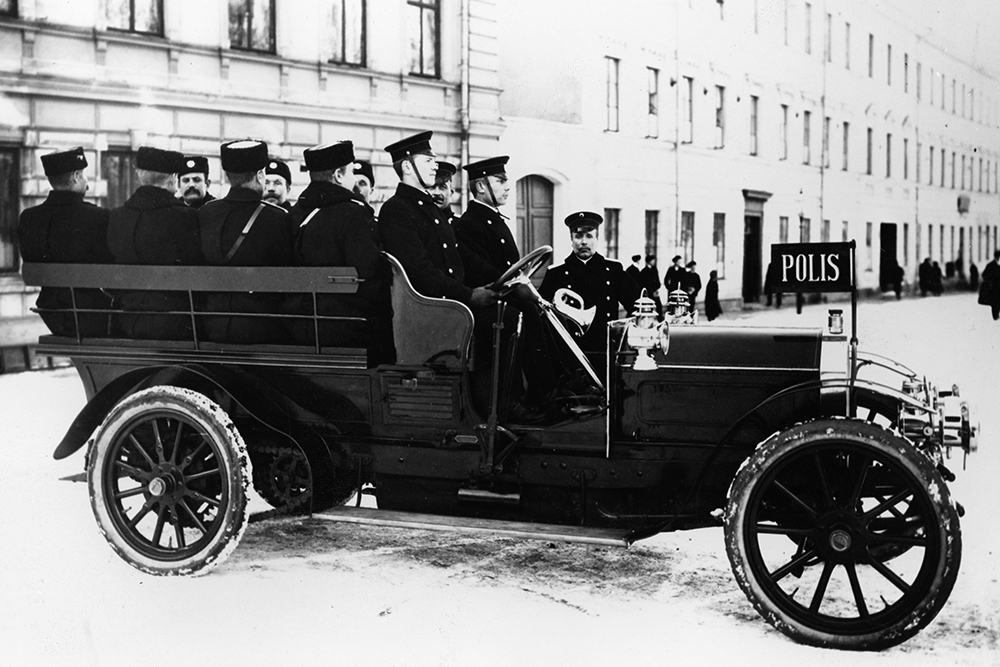
Turku Police Department car from 1910
In 1910, Turku Police Department acquired a vehicle in which a large number of policemen could be transported quickly and at once. The city’s police chief noted that the “uneven streets of Turku need a machine made of the very best materials”.
Photo the Police Museum
-
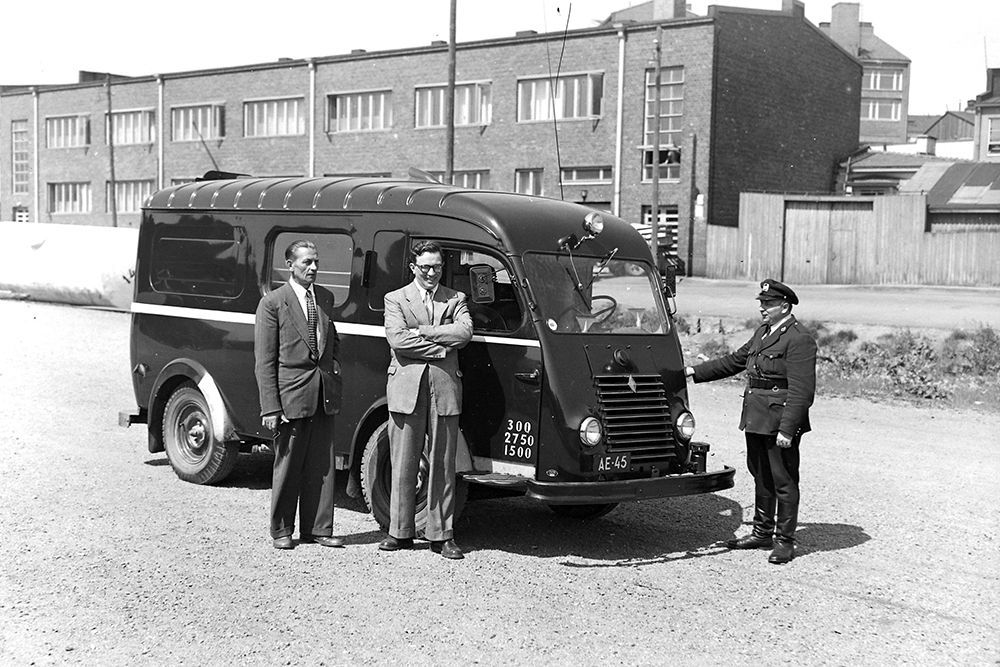
Criminal investigation department van
Helsinki Police Department received the first criminal investigation department investigation van in 1951.
Photo the Police Museum, the Crime Museum collection
-
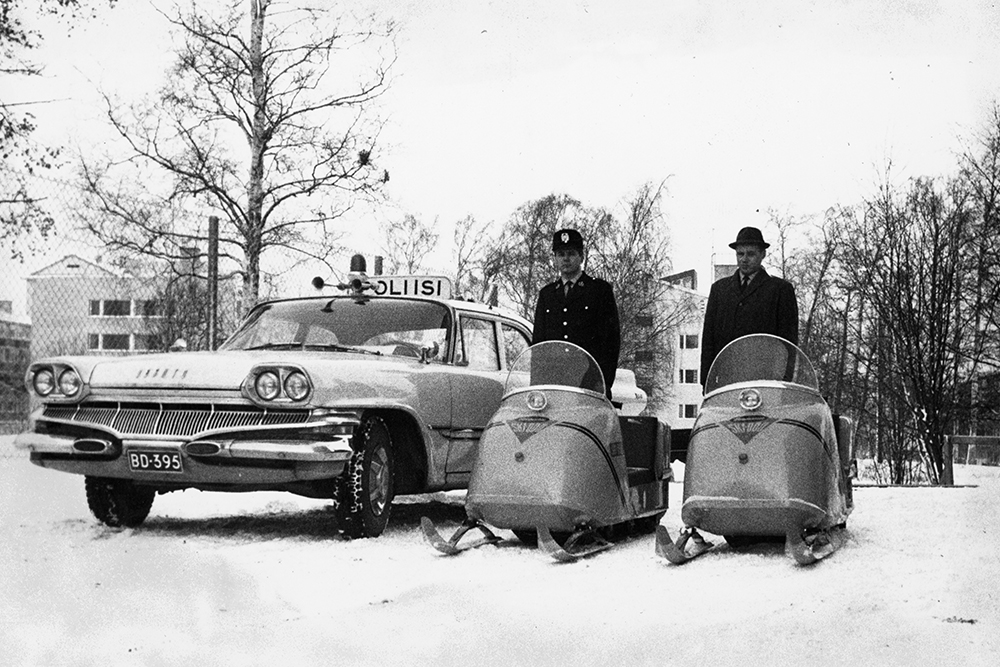
Snowmobiles for roadless journeys
Snow scooters were new for the police in 1963. In the picture, police officers present “snowmobiles for roadless journeys” and a DeSoto car.
Photo the Police Museum
-
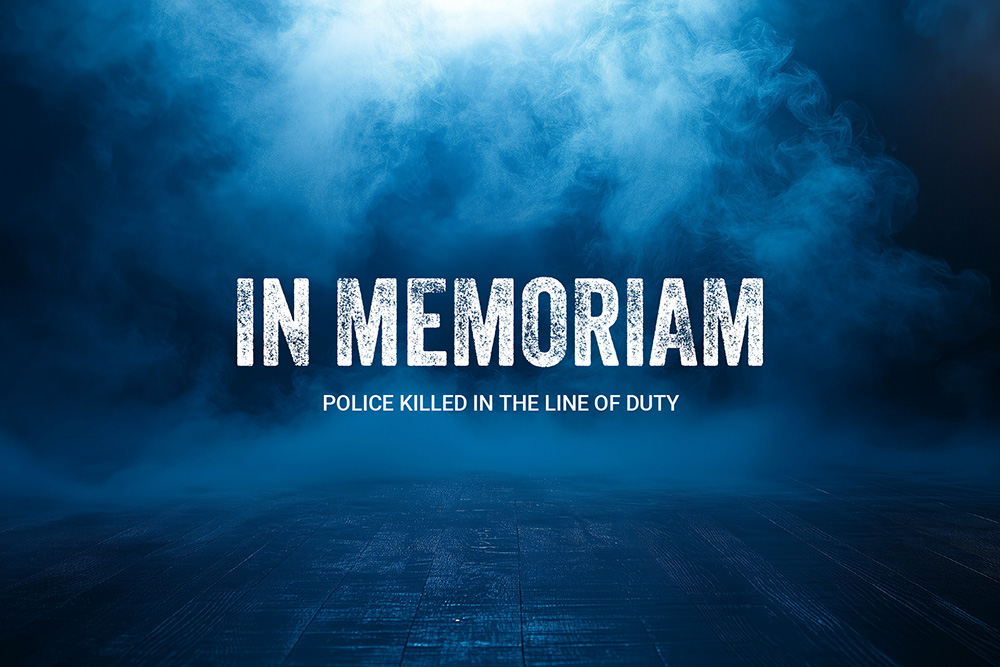
In Memoriam
The “In Memoriam” online exhibition recounts the history of police fatalities. The exhibition for example reveals the periods of Finland’s history when the highest numbers of police fatalities have occurred, the most dangerous types of assignments for police officers, and how the work community responded to these events in different periods. The online exhibition includes a database of 164 police fatalities.
Photo the Police Museum, Reetta Lepistö
-
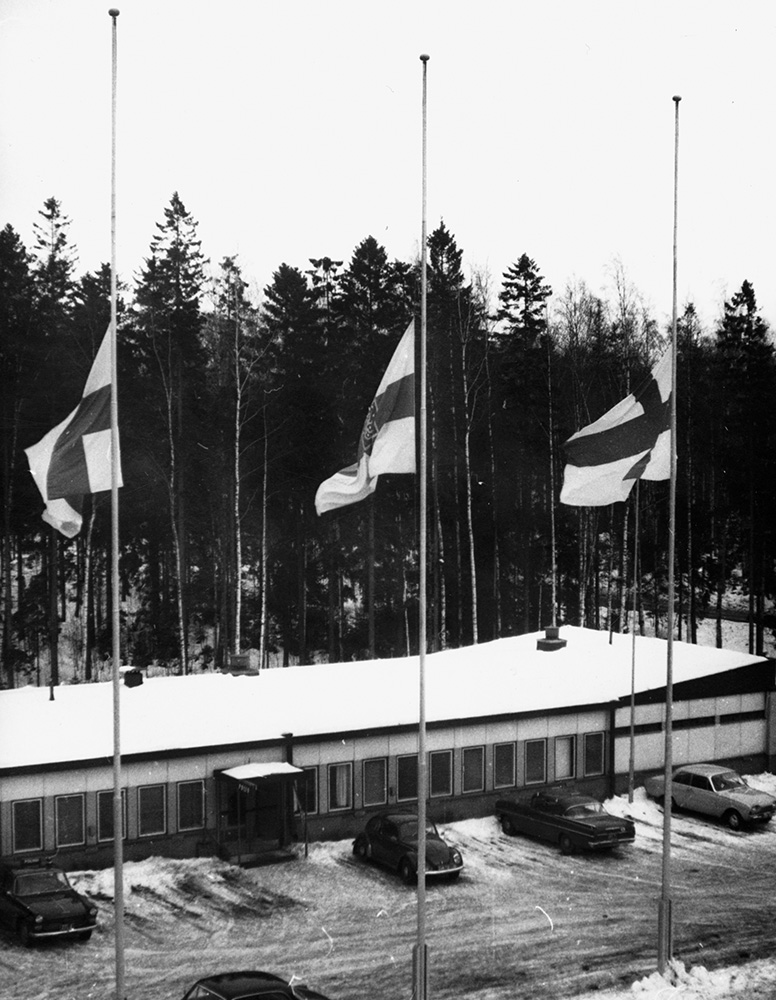
Flags flying at half-mast 1969
Flags flying at half-mast outside of the Police Academy to honor the police officers killed at Pihtipudas in 1969. The Pihtipudas killings are uniquely tragic in scope: never before have so many police officers died in the line of duty at once.
Photo the Police Museum, Reetta Lepistö
-
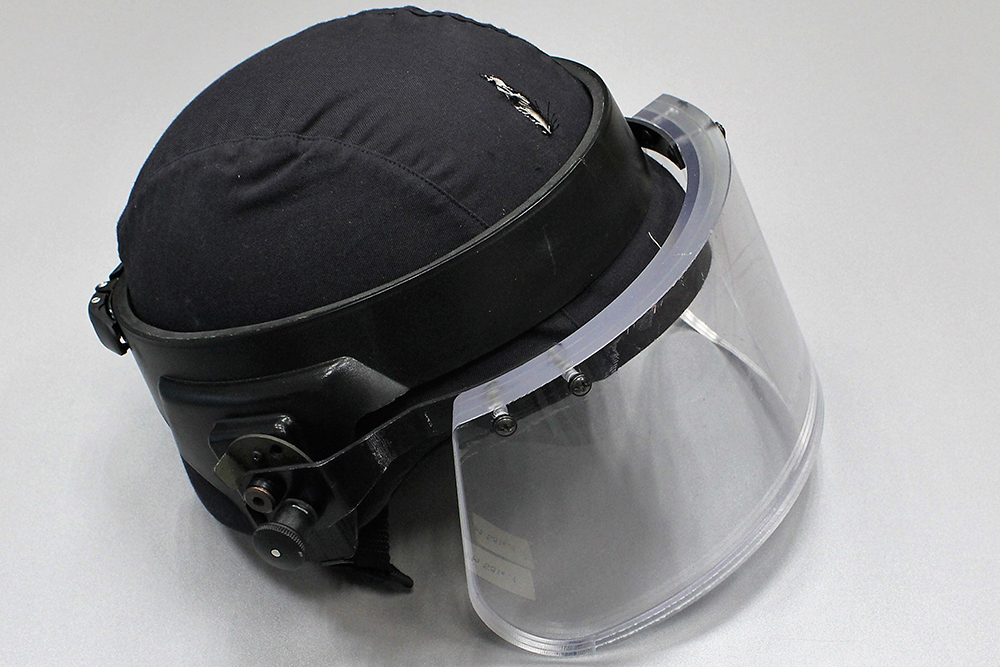
Safety helmet that saved a police officer's life
Equipment plays a key role in occupational safety of the police. The Police Museum's collections include a helmet where there is a cut in the protective fabric and an impact mark on the protective visor. The helmet was worn by a police officer of Oulu Police Department's Demanding Situations Special Task Force in January 2015. The police were about to apprehend a man who had killed two people in a restaurant and injured two others. During the apprehension, the man struck the police officer with an axe.
The new model safety helmet with a thick visor saved the police officer’s life. The officer was able to return to work after this life-threatening situation.
Photo the Police Museum
-
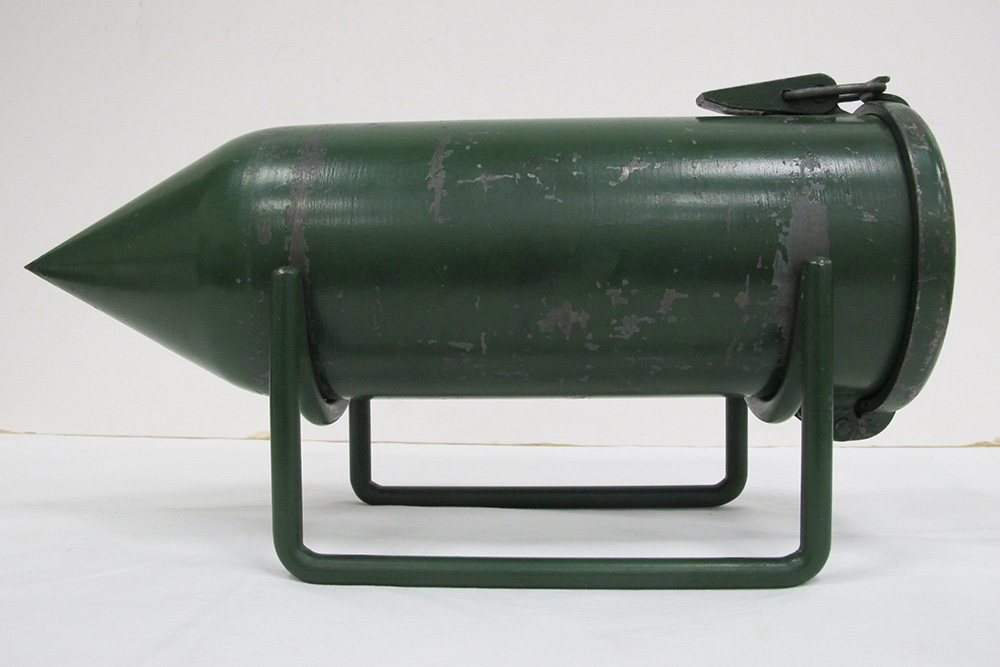
Secret “mailbox” related to espionage
So-called “dead mailboxes”, in other words stashes hidden in the terrain, have been used in connection with espionage. The documents or other material requested by the principal were left in them, and new assignments and monetary rewards paid for espionage were retrieved from them. The “mailbox” in the photograph is possibly related to the great espionage case in Jyväskylä in the early 1950s.
Photo the Police Museum
-
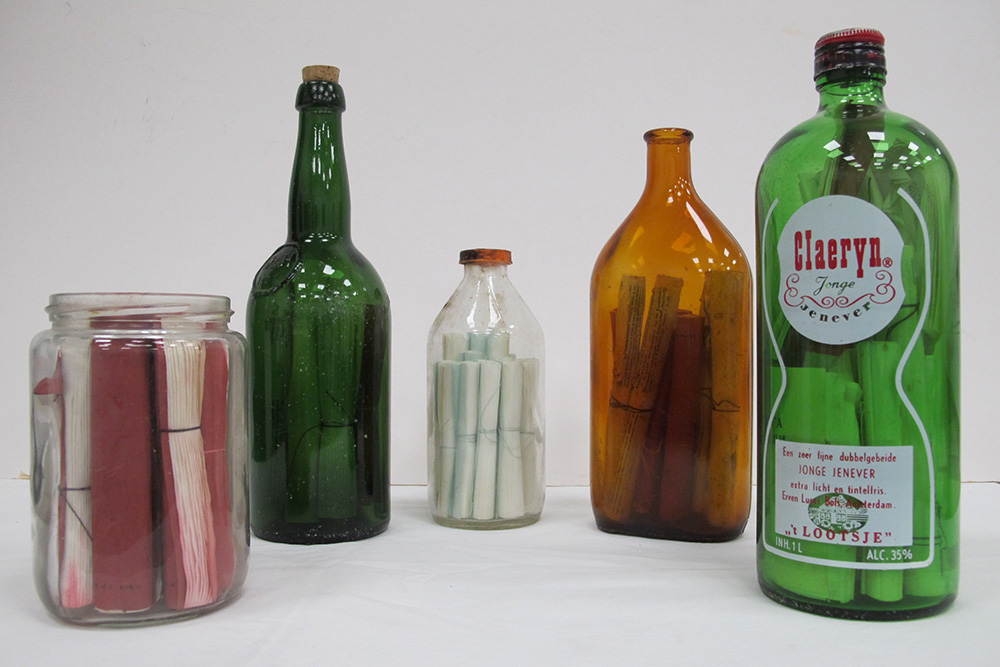
Bottles used for smuggling prohibited material
The export of religious literature to the Soviet Union was prohibited during the Cold War. In the spring of 1970, bottles containing Christian literature in the Russian and Estonian languages drifted onto the shores of Helsinki from the sea. The Finnish Security and Intelligence Service investigated the origin of the material, but the sender of the “message in the bottle” could not be ascertained.
Photo the Police Museum
-
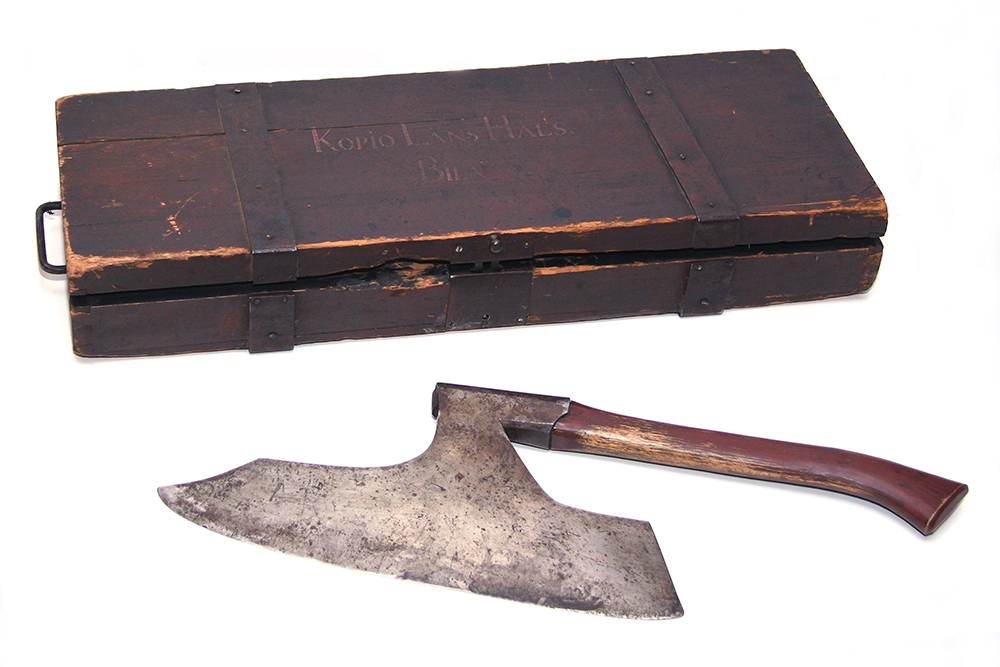
An executioner’s axe
The executioner’s axe of the Province of Kuopio executioner and its storage box from the late 1700s. The purpose of the axe with a wide blade was to decapitate a person.
Photo the Police Museum, the Crime Museum collection
-

Shoes associated with the Lake Bodominjärvi murders
A triple murder was committed at Lake Bodominjärvi in Espoo in 1960, and the offender has not been identified to this day. In connection with the pre-trial investigation, the suspect’s shoes were recovered by the police for forensic laboratory examination. The traces of blood on the shoes are marked with pins placed on each drop of blood on the shoes.
Photo the Police Museum, the Crime Museum collection
Download image (1.6 MB)
-
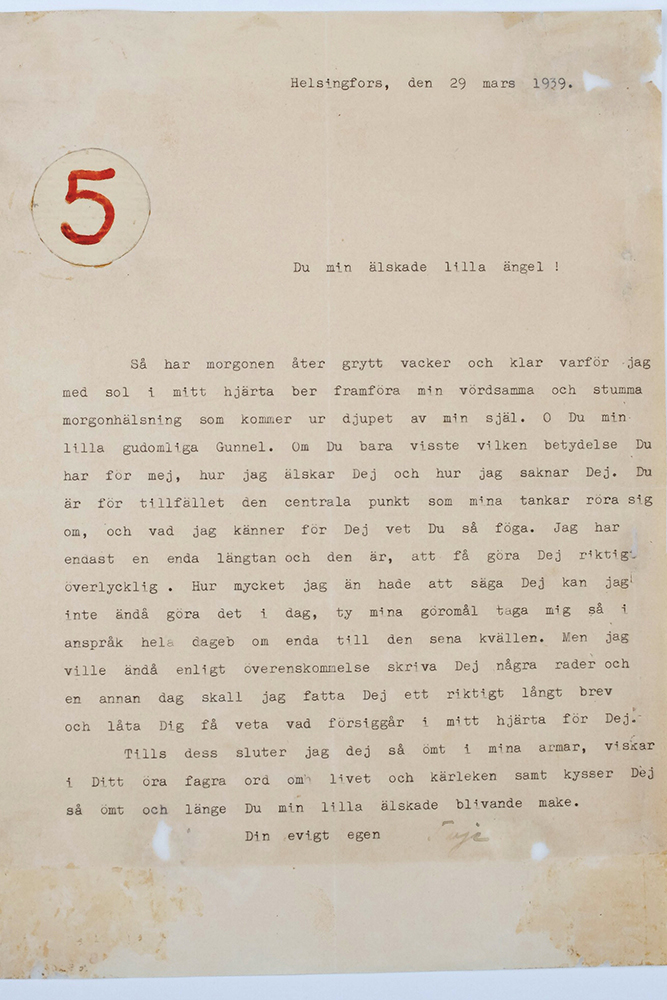
Romance scammer Auervaara's letter
Du min älskade lilla ängel! My darling little angel! This is how the notorious Finnish romance scammer and professional criminal Ruben Oskar Auervaara started one of his numerous scam letters. Auervaara’s (right name Jansson) letter is dated 29 March 1939. He corresponded with several other women as well during the same time. Sometimes the letters are signed with the name Ruben, sometimes Erkki, Erik or Toje, as in this letter. The language in the letters was Swedish or Finnish, as required.
Auervaara used newspaper advertisements to lure women to correspond with him, and cheated money and other property from them, for example by promising them marriage.
Photo the Police Museum
-
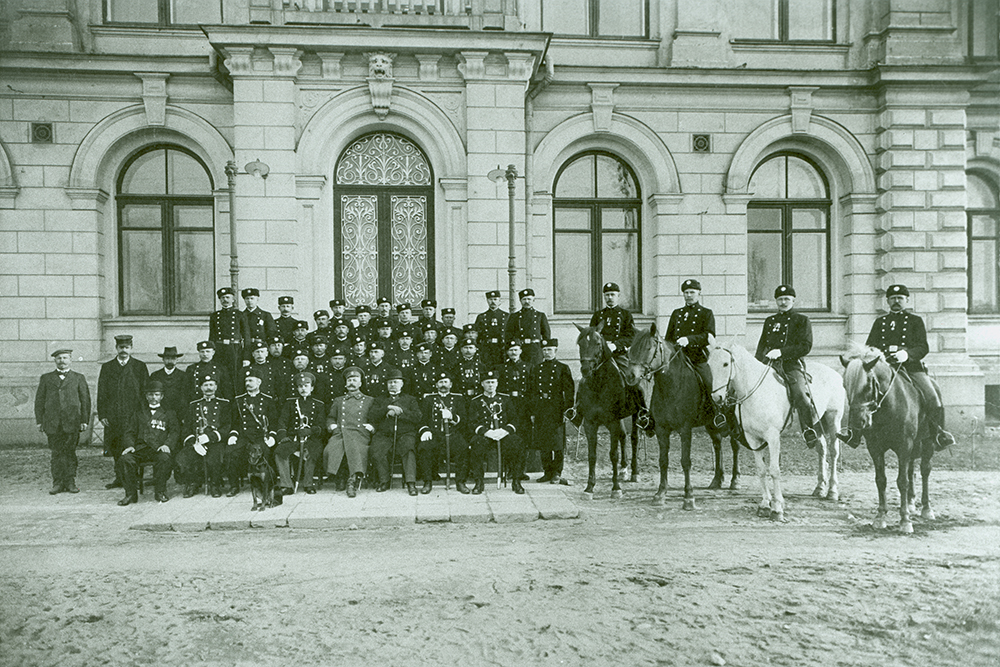
Police officers in Kuopio in 1913
-
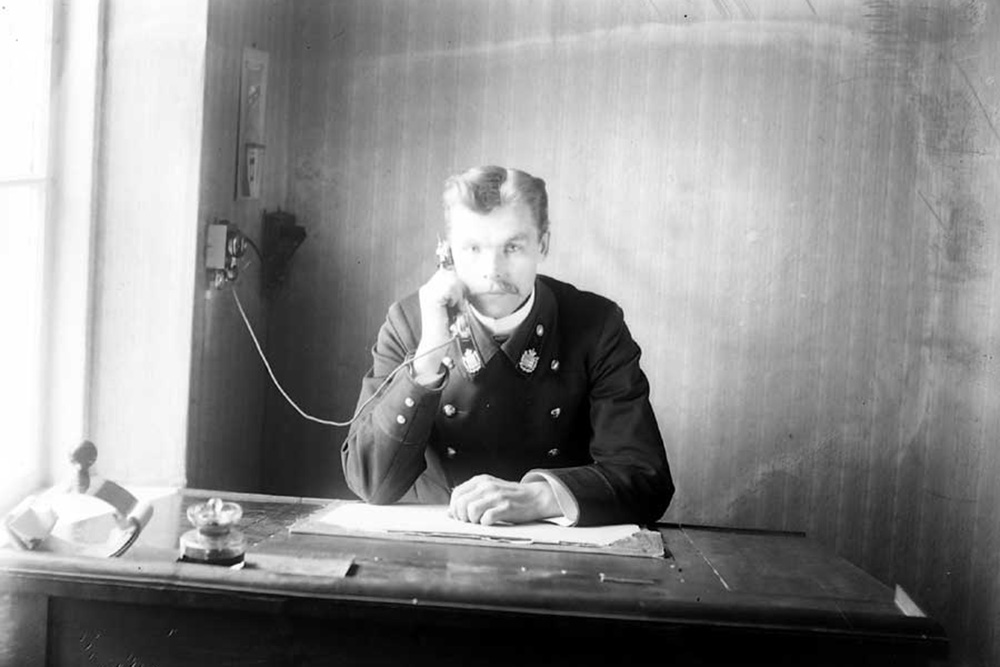
Telephones in active use already in the early 1900s
Telephones were in active use at the Helsinki Police Department already in the early 1900s.
Photo the Police Museum, the Crime Museum collection,
A. Rosenberg -
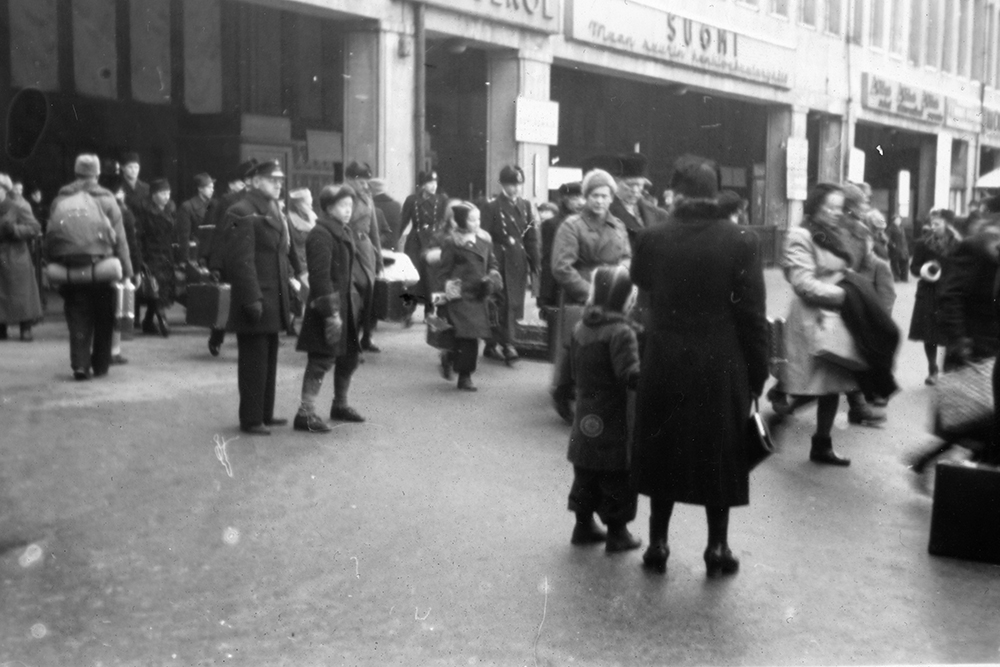
Escape from aerial bombing
During the war, the police supervised people’s movement and evacuation on the home front. In the picture, Helsinki residents are seen at the railway station on 27 February 1944, escaping from aerial bombings of the city. Police officers are present in the midst of the crowd.
Photo the Police Museum
-

The police at the Helsinki Olympics
Before the Helsinki Olympics in 1952, concerns were raised about how presentable the police would be in the eyes of an international audience. The aim was to modernise the military uniform, and the conduct of the police, making them more relaxed. The trend was similar in other Nordic countries, and the civilian-type uniform of “gentleman police” was first introduced in Finland. Before the Olympics, police constables received training in languages and instructions on how to behave, present themselves and serve the general public.
Photo the Police Museum
-
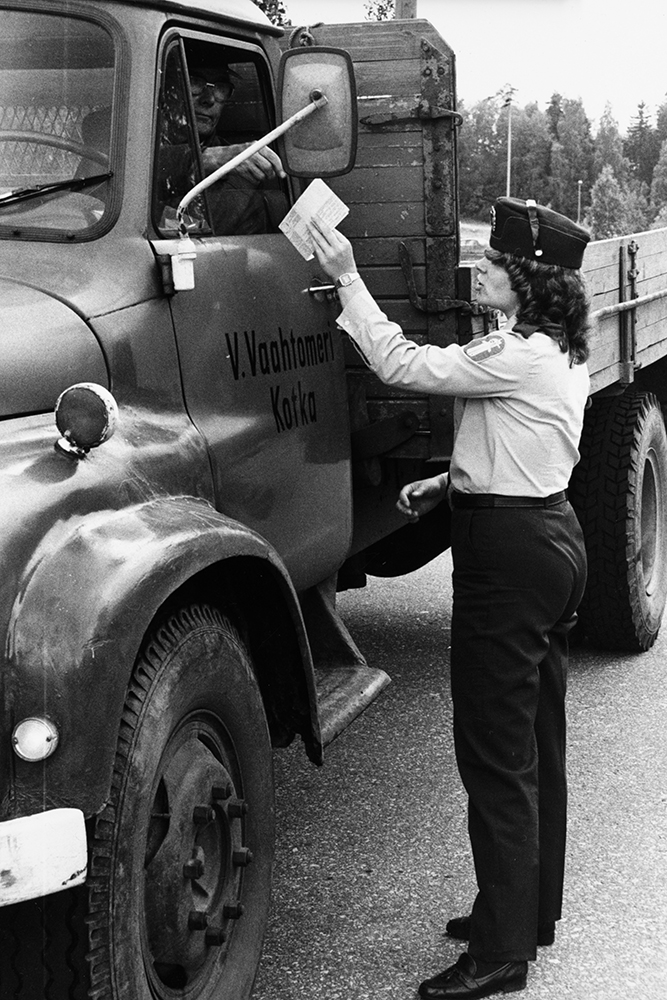
A female police officer in traffic surveillance
In the early 1900s, the criminal investigation departments recruited female officers to serve in the vice squad. In the 1920s, they were put in charge of for example arrested women, unwed mothers and “vagrant children”.
The first training course for female police officers was arranged in 1923. The education and training, position and pay of female police officers was weaker than that of male officers for a long time. From the 1970s onwards, men and women received the same police training, and at that time, women also entered the uniformed police squad. In 2019, women were present in all police duties, except the National Special Intervention Unit.
In the photo, a female police officer is checking the paperwork of a lorry driver in the 1980s–1990s.
Photo the Police Museum
-
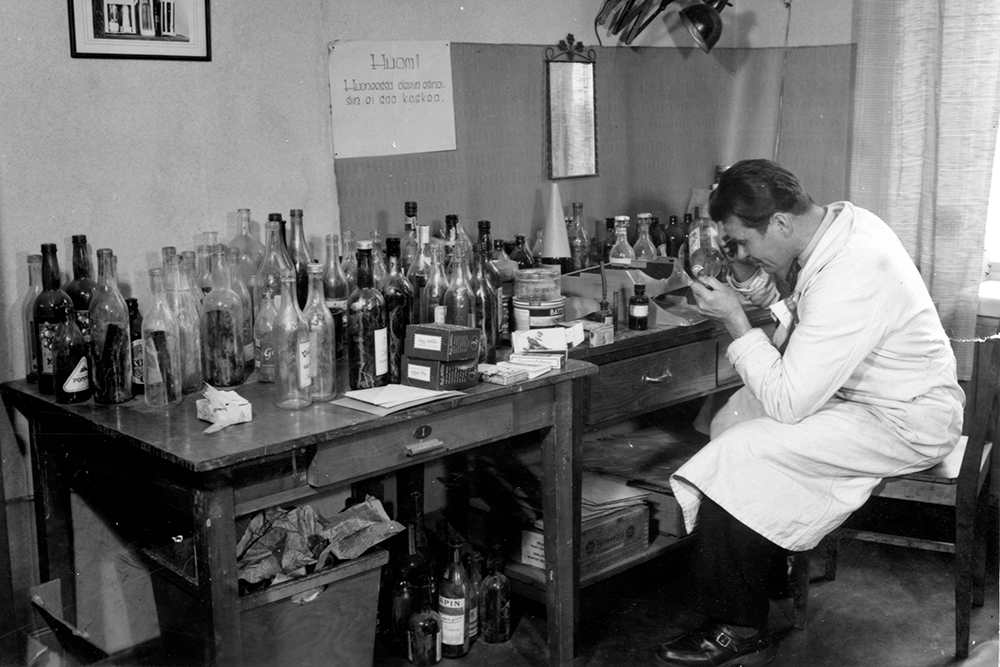
Fingerprint analysis
Manager of the Crime Museum, assessor Viljo Vathén, is analysing fingerprints in 1955. Vathén’s colourful guided tours in the Crime Museum were famous for making some of the visitors feel nauseous.
Photo the Police Museum, the Crime Museum collection
-

Microphotography equipment
The Crime Museum collection sheds light on the history and development of forensic crime investigation. This microphotography equipment was acquired for the Crime Research Centre in the 1920s–1930s.
Photo the Police Museum, the Crime Museum collection
-

Archive of the Distinguishing Features Office
One of the methods used by criminal investigation departments has been to collect various types of information and compile personal registers. The Crime Research Centre’s Distinguishing Features Office collected a variety of information of criminals, including fingerprints, photographs and a card file of nicknames.
Photo the Police Museum, the Crime Museum collection
-
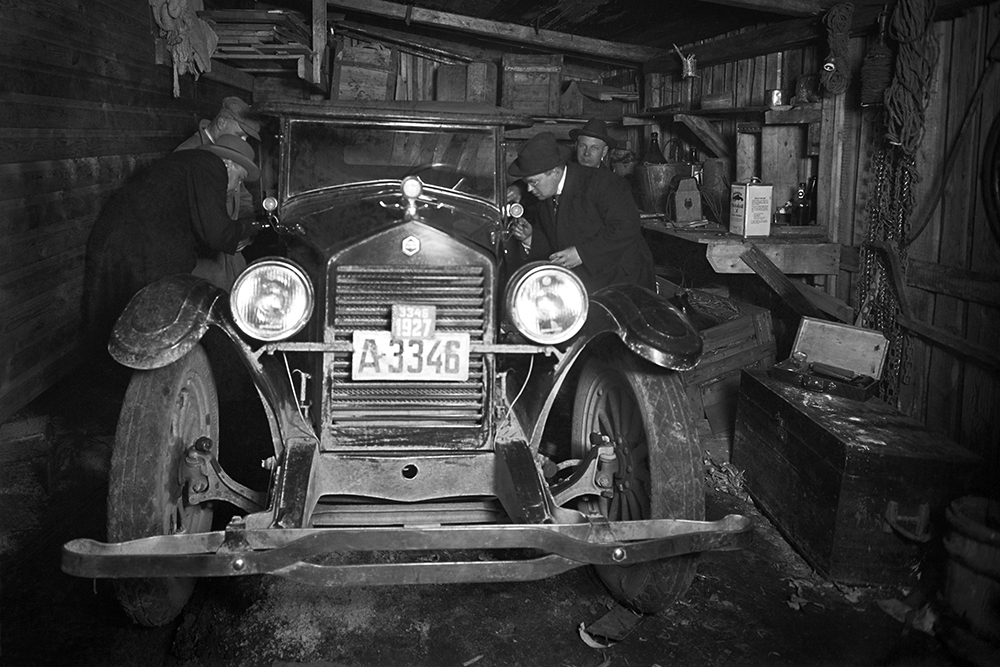
Smugglers’ car
The Prohibition Act meant a lot of work for the police in 1919–1932. Even though the purpose of passing the Act was to safeguard public morale, to eradicate crime and bad manners, the exact opposite happened. Smuggling and trade of liquor started to flourish, and the crime rate increased manifold.
In the photo, police from Helsinki investigate the car of moonshine bootleggers.
Photo the Police Museum, the Crime Museum collection
